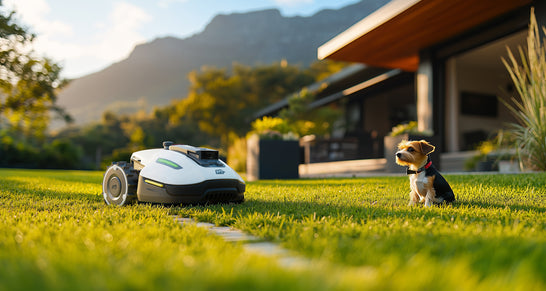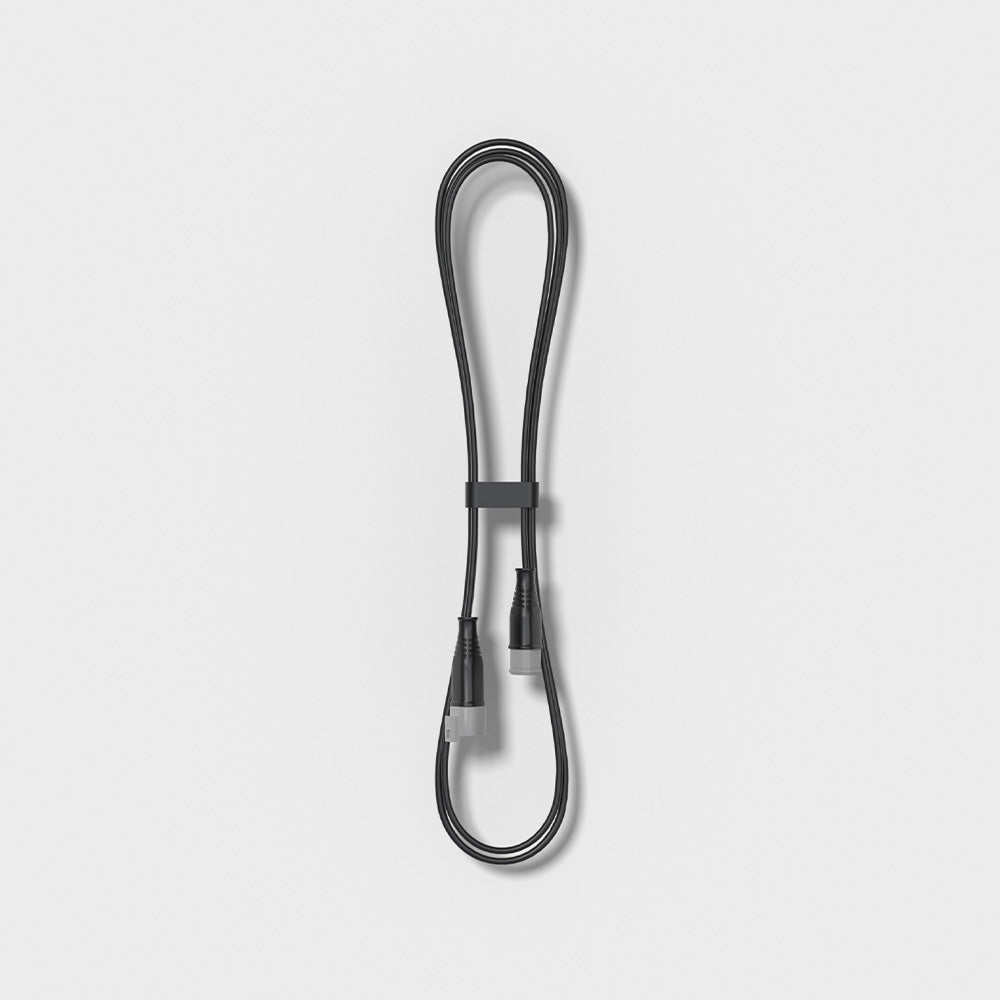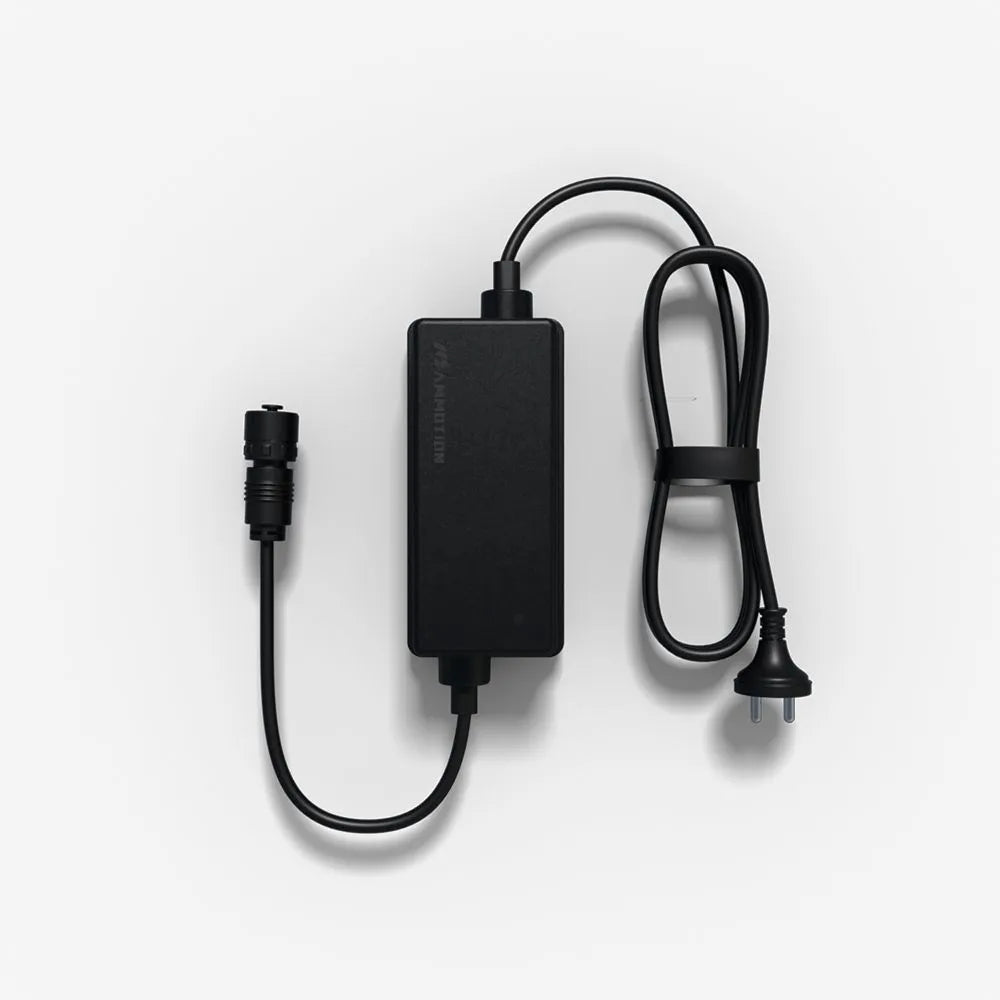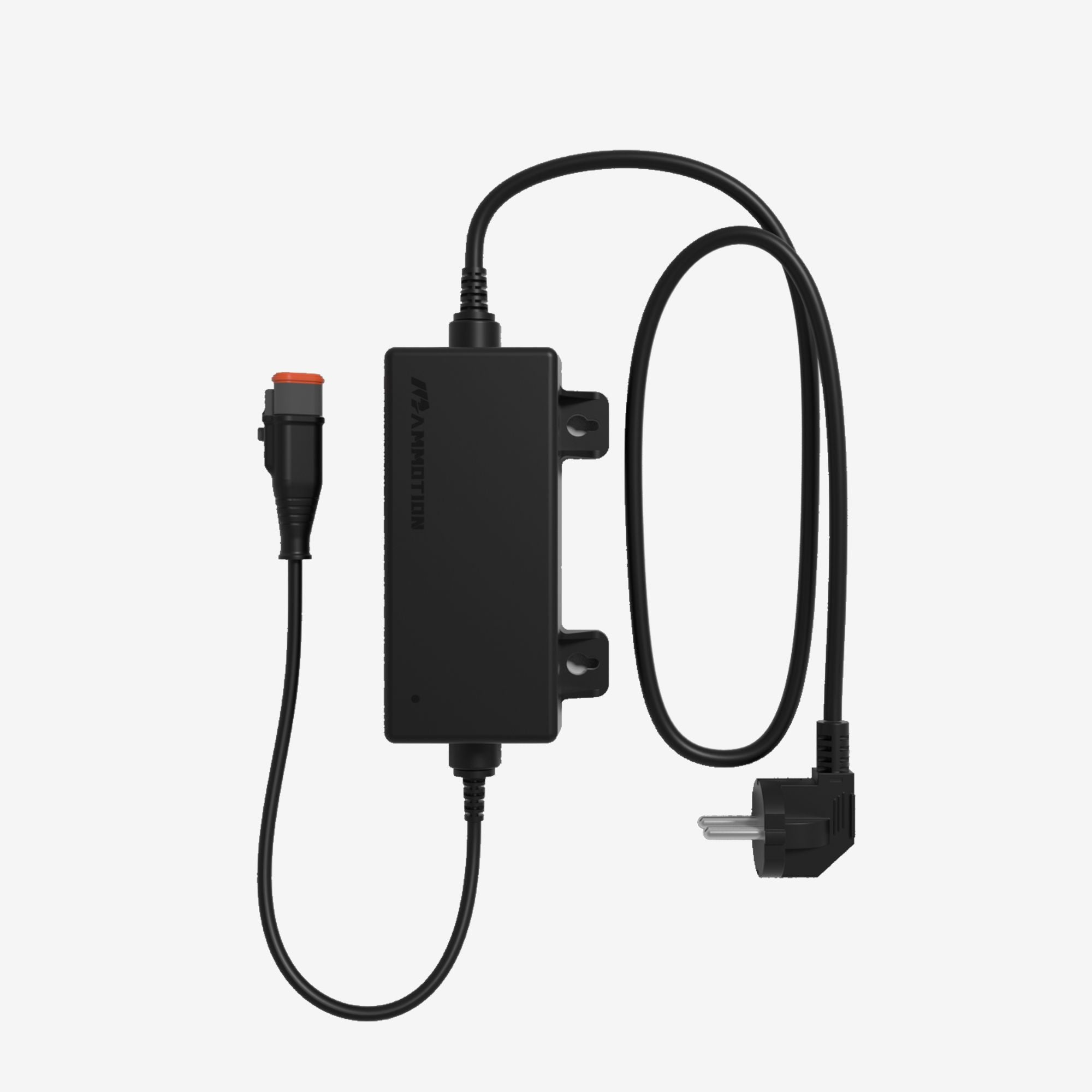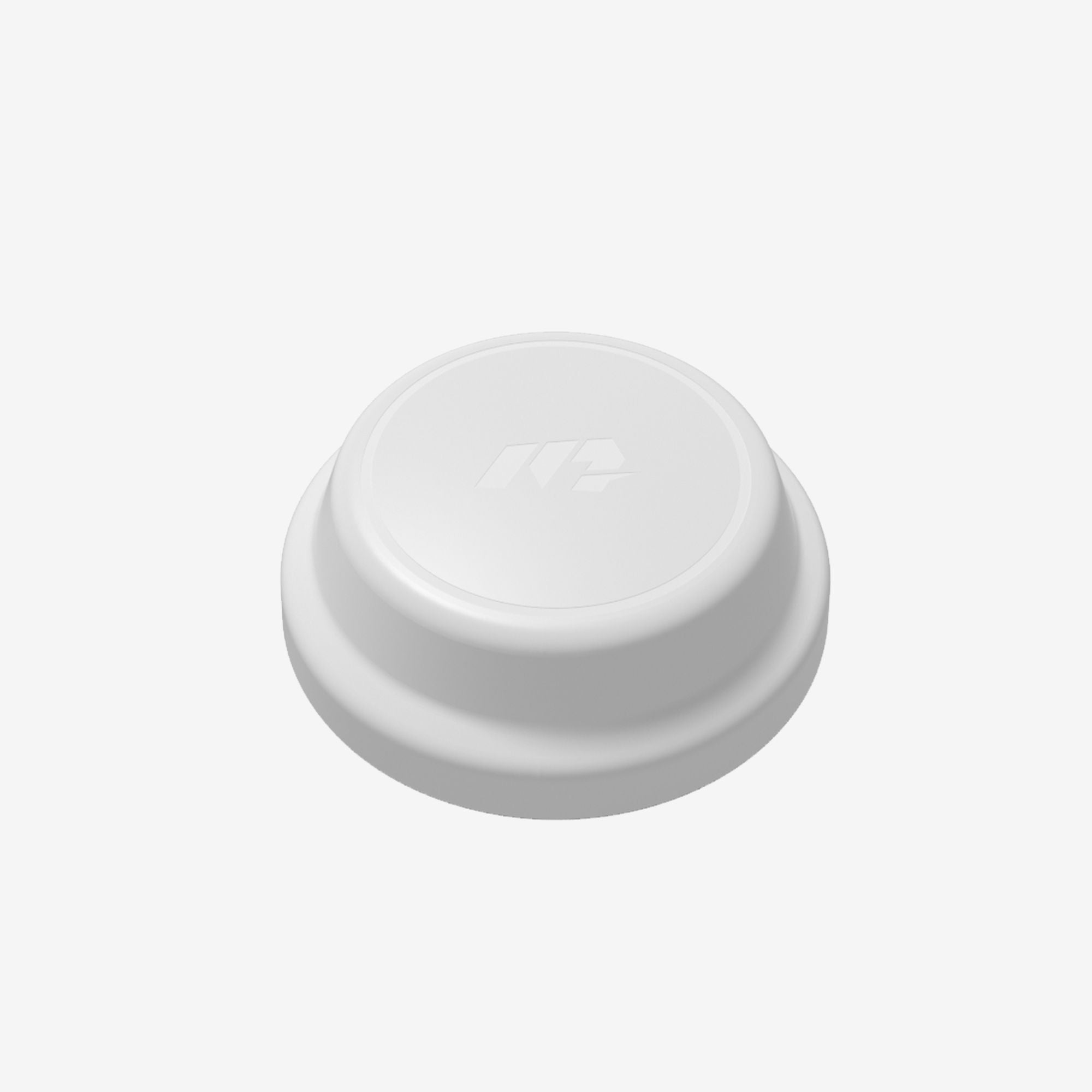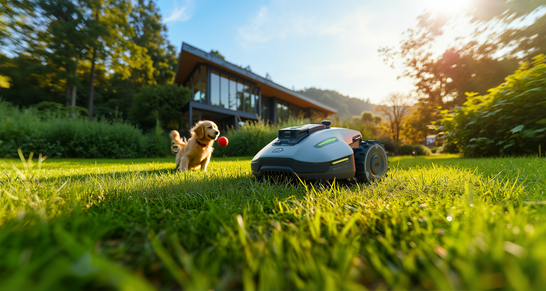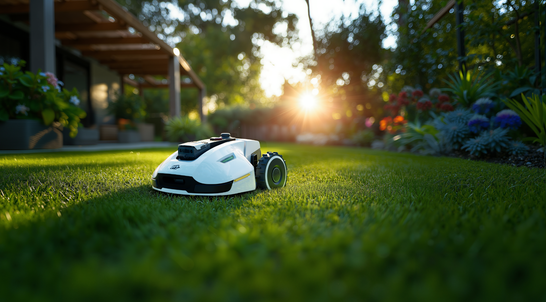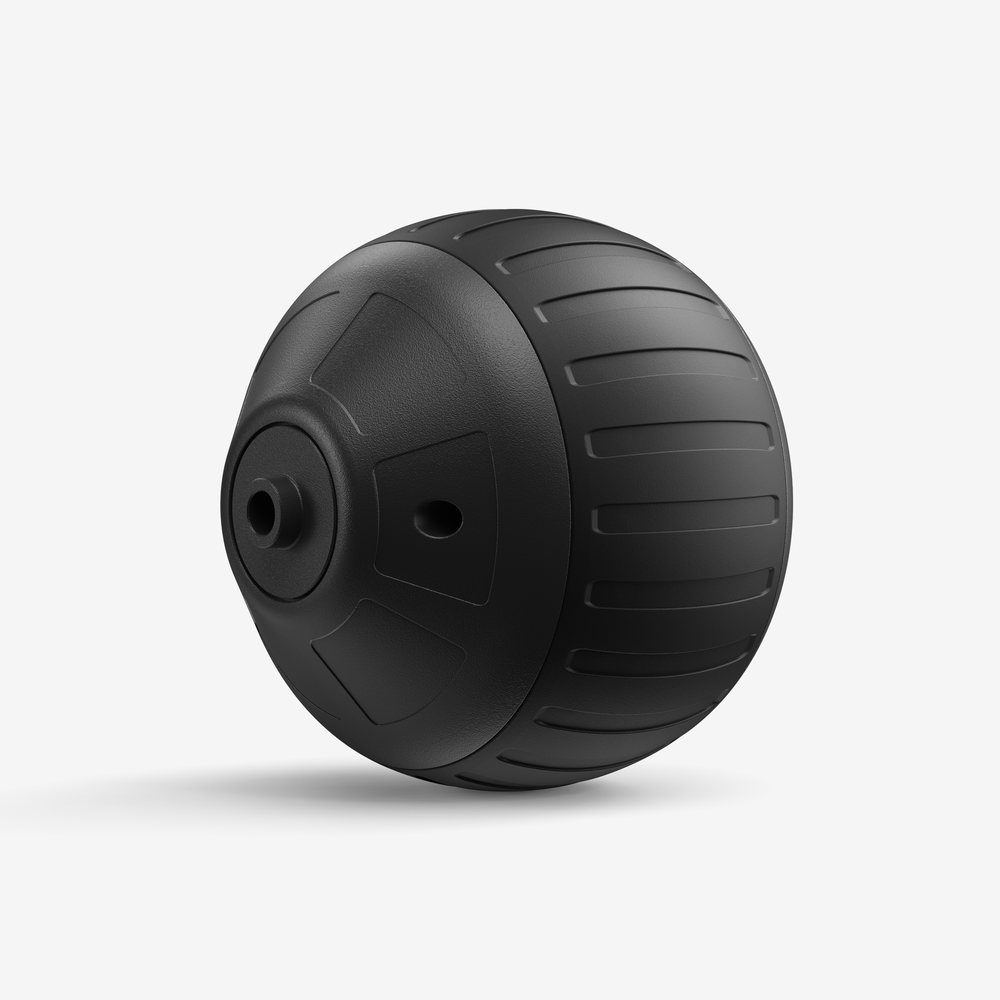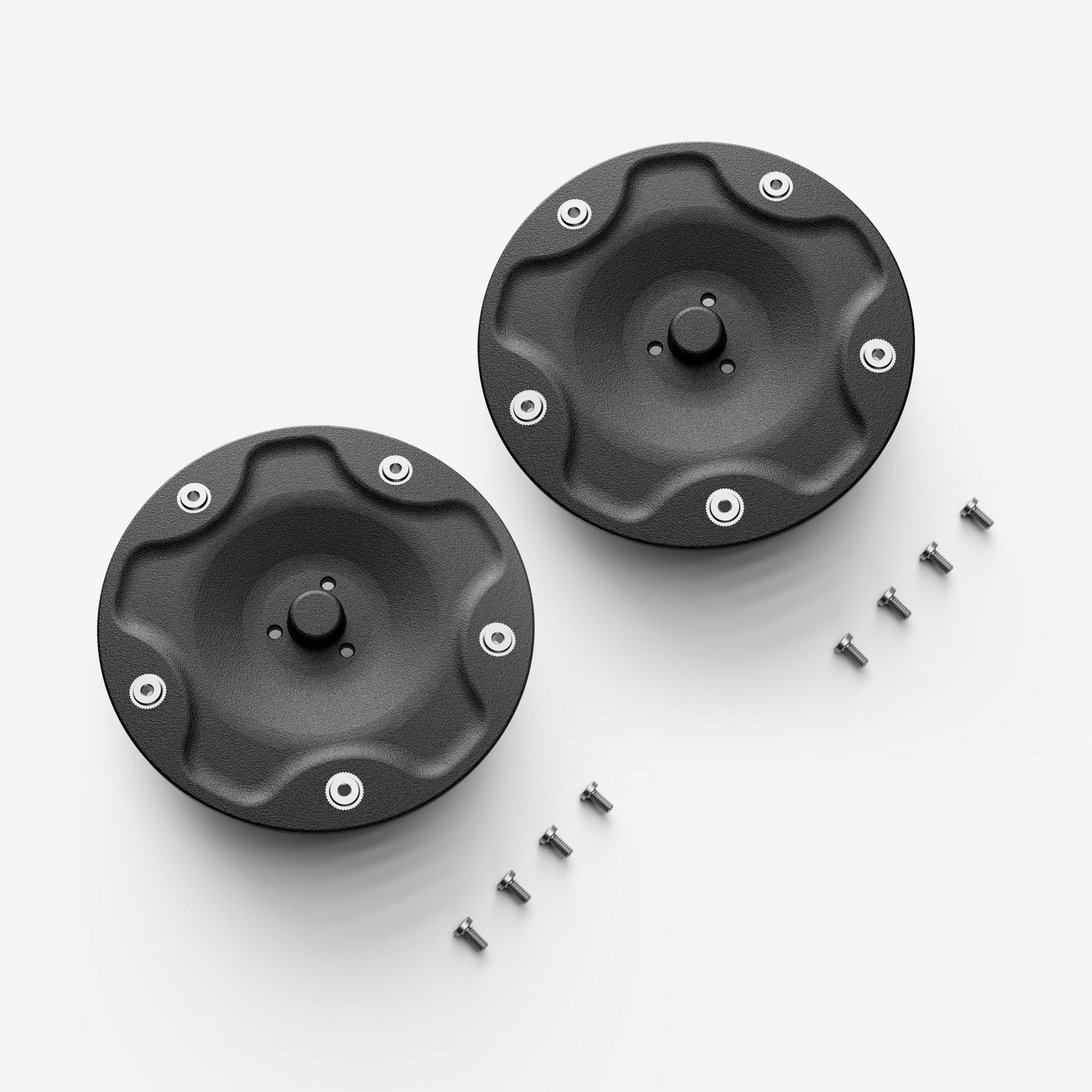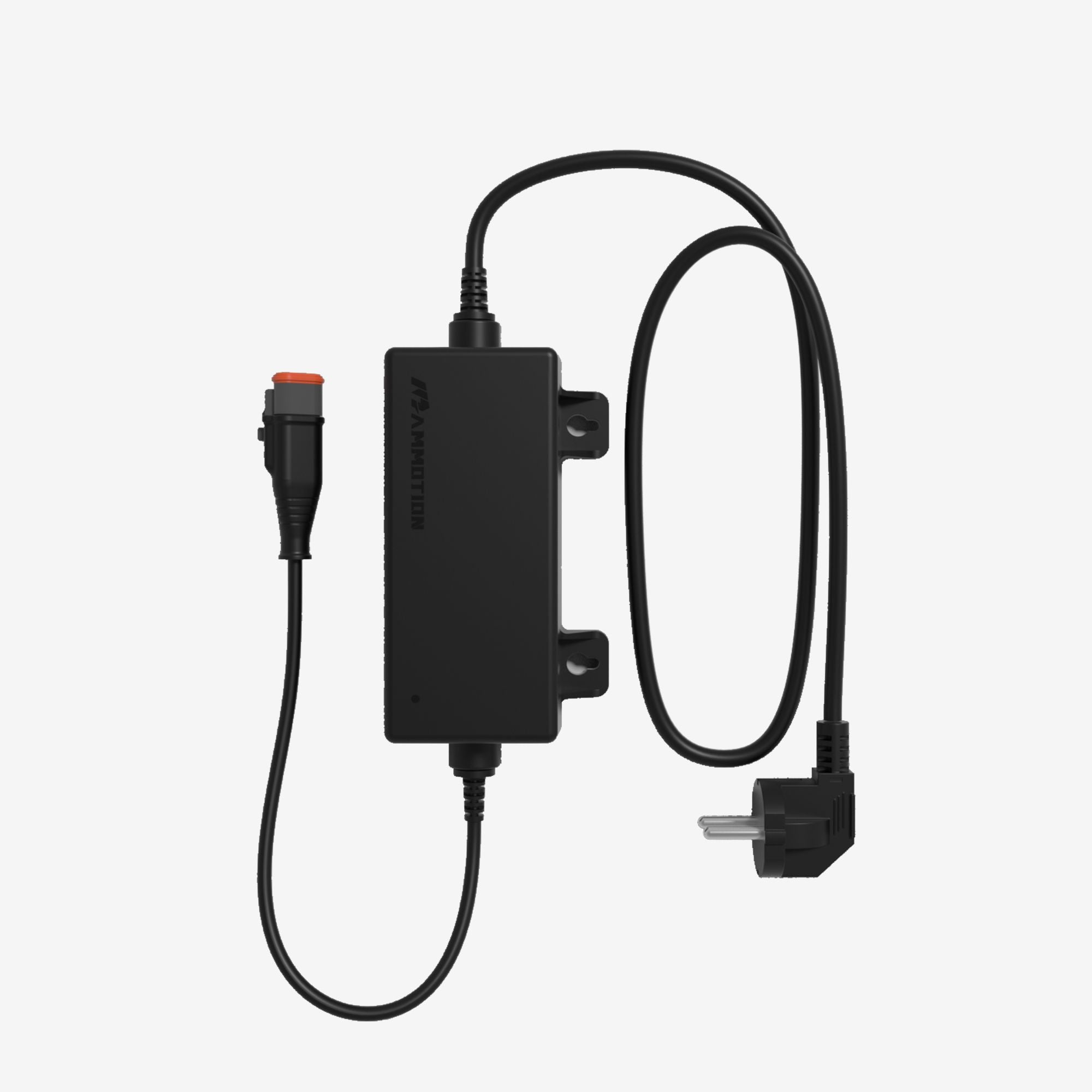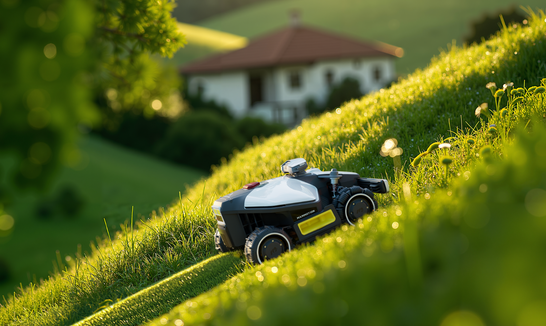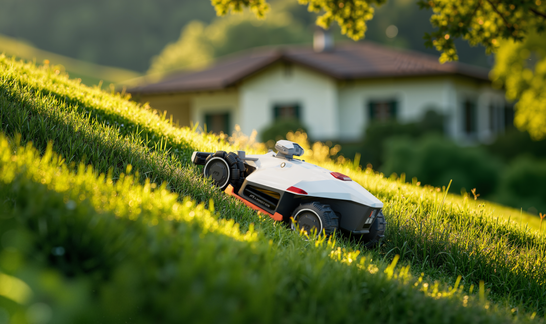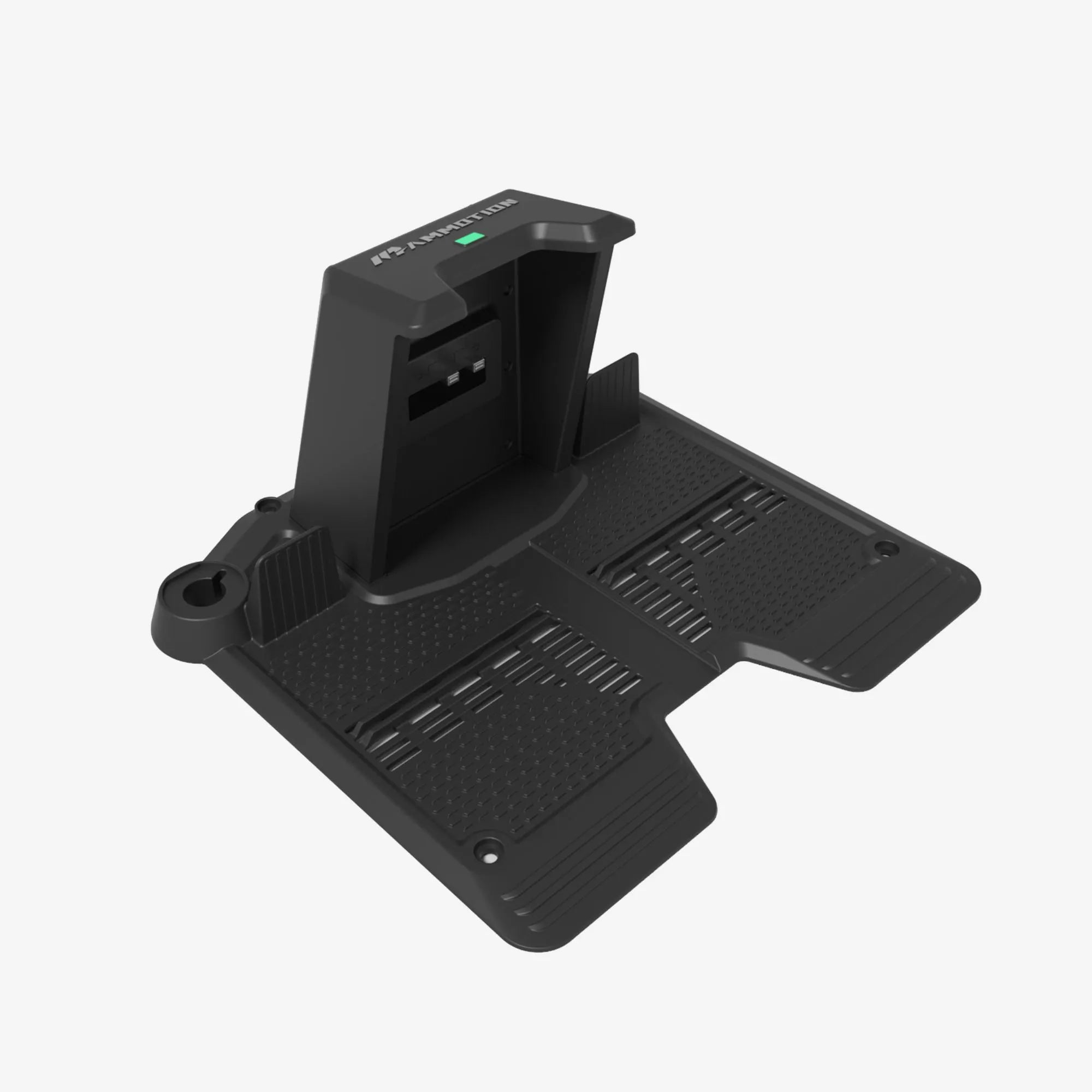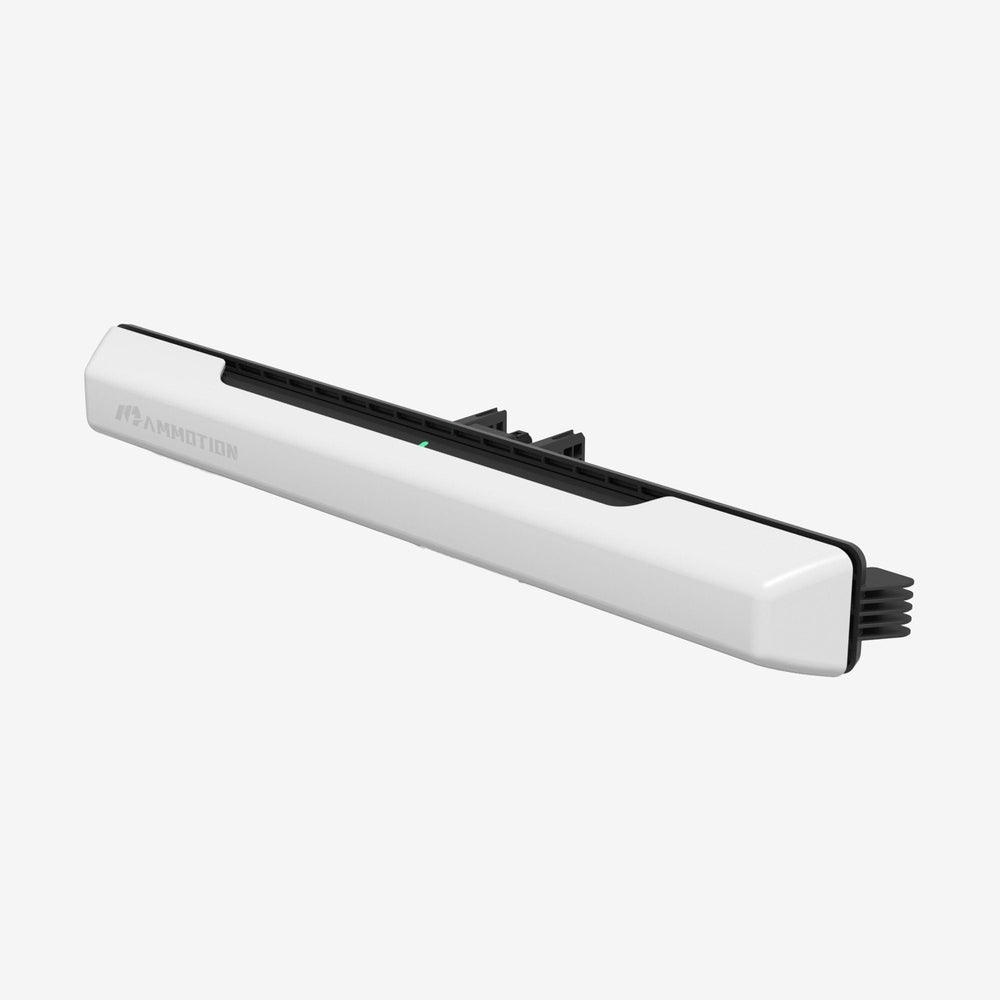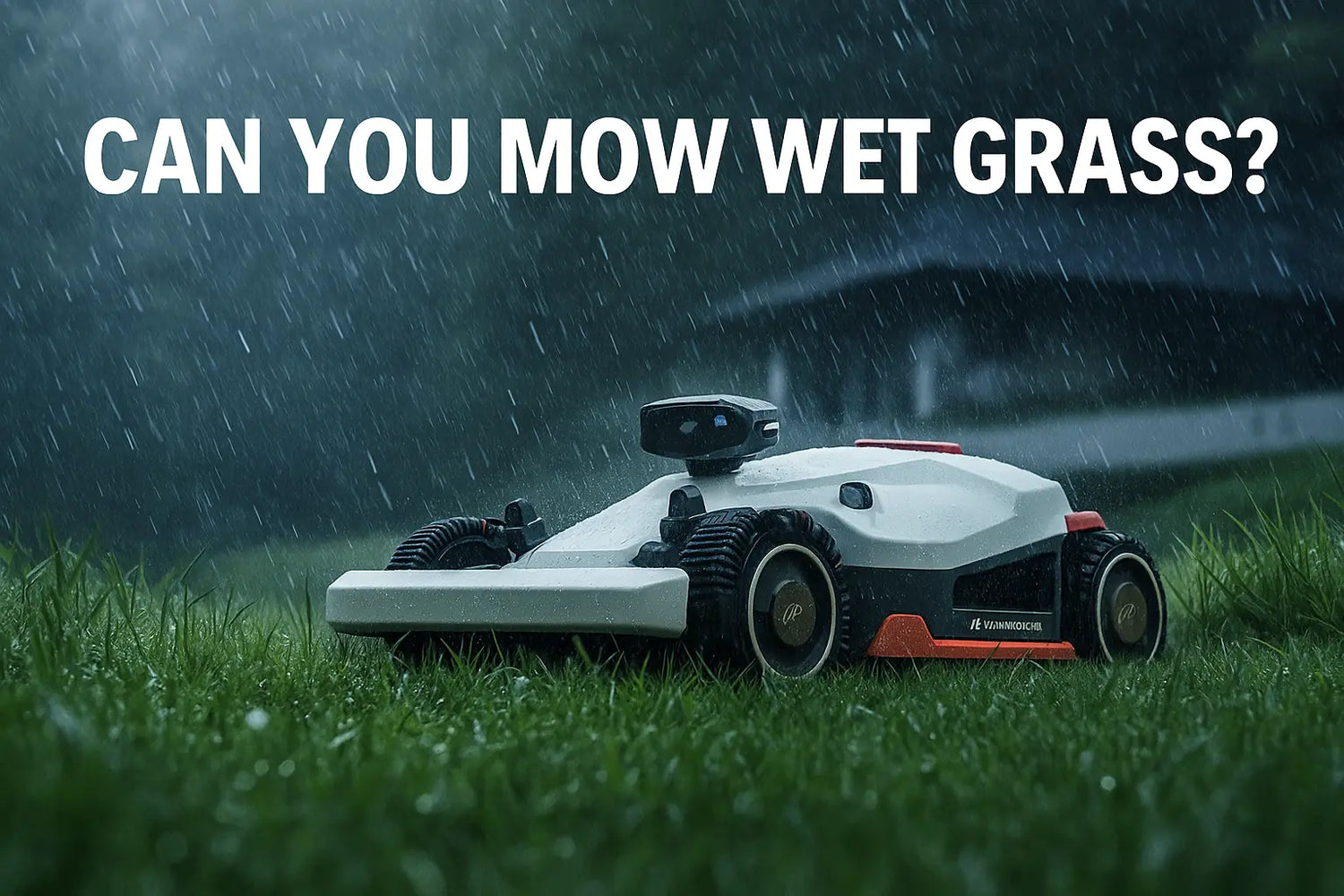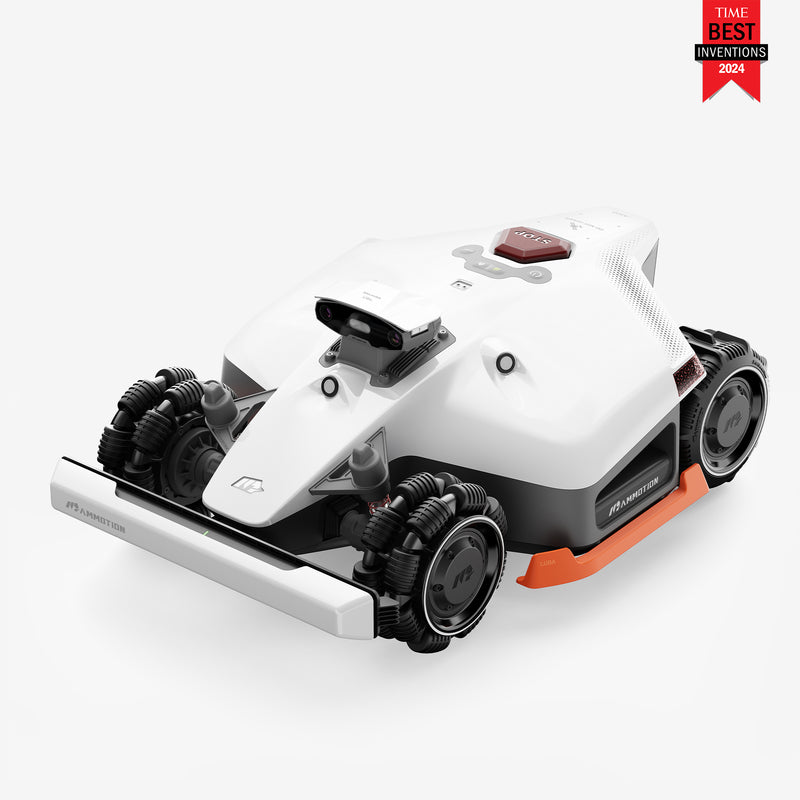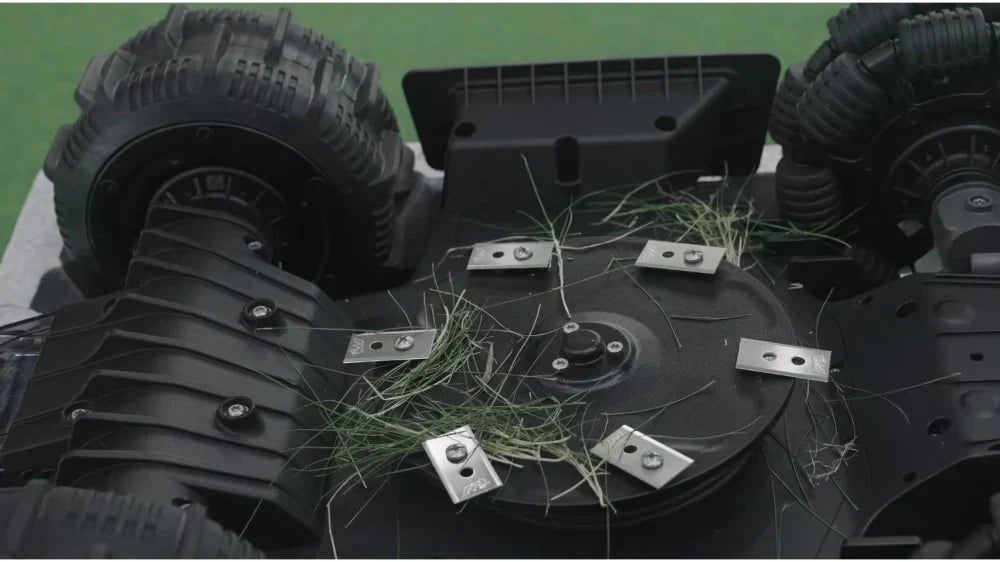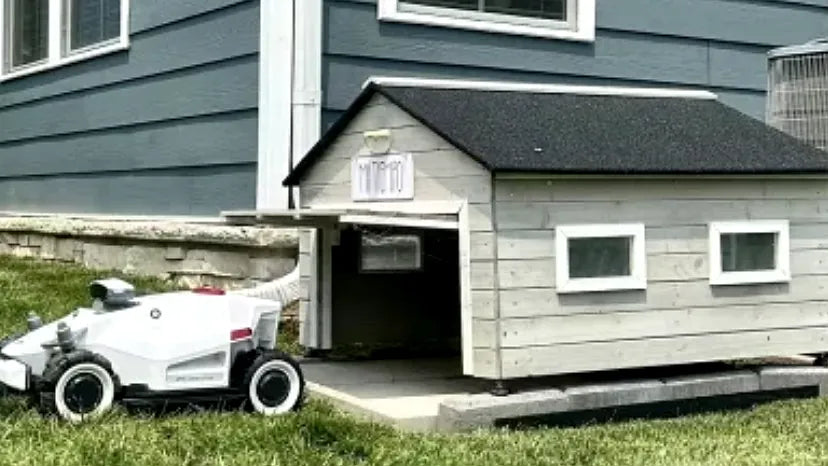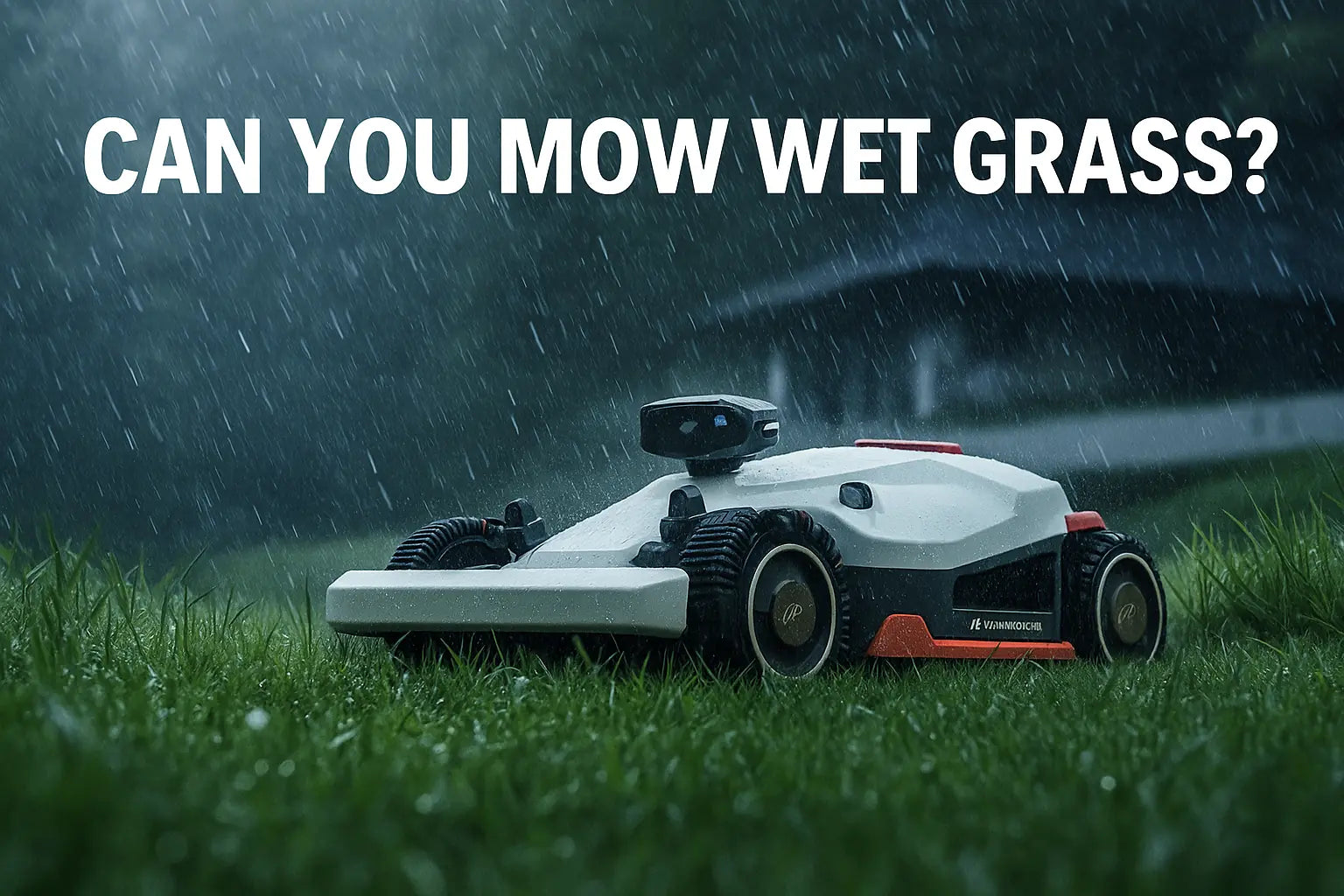Can You Mow Wet Grass? In the UK’s ever-shifting weather, mowing often means working with damp, unpredictable lawns. But the real question isn’t simply if you can mow wet grass — it’s how to do it without damaging your lawn or your mower.
Beyond the usual warnings, few gardeners realise that moisture changes grass structure, increases blade resistance, and compresses soil micro-air pockets that roots need to breathe.
This guide shares field-tested methods to assess ground moisture, adapt your mowing technique, and protect equipment performance. You’ll also discover how next-gen robot mowers like Mammotion LUBA 2 AWD use AI vision + RTK precision, and weather-adaptive sensors to plan the perfect cut — even in Britain’s unpredictable drizzle. Smarter mowing starts here.
Why Mowing Wet Grass Is Tricky — Especially in the UK
For most UK homeowners, a perfectly timed dry mowing day feels almost mythical. Between passing showers and lingering dew, lawns often stay damp even when the sky looks clear. Yet few gardeners stop to consider why this moisture makes mowing so difficult — or how it quietly damages both the grass and the mower itself.
What “Wet Grass” Really Means and Why It Matters
In the UK, damp grass is more than a nuisance — it’s a technical challenge. When water penetrates grass blades, it softens the internal fibers and adds surface tension, making each strand heavier and harder to cut cleanly.
Instead of slicing, mower blades often pull and tear, leaving frayed tips that oxidize into brown patches within days. These micro-wounds also release nutrients that attract fungal spores, accelerating disease spread.
Why UK Lawns Stay Damp Most of the Year
Britain’s temperate maritime climate keeps lawns in a near-constant state of humidity. Clay-dominant soils in southern England retain moisture for 24–48 hours after rainfall, while shaded northern gardens dry even slower.
This persistent dampness limits oxygen flow in the root zone and encourages moss, which thrives where drainage is poor. Ironically, frequent mowing on wet soil makes things worse — every pass compresses air channels, reducing water absorption and slowing turf recovery.
The Hidden Impact of Moisture — Friction, Clumping, and Root Stress
Wet grass doesn’t just affect cutting efficiency; it alters your mower’s entire ecosystem. Sticky clippings restrict airflow under the deck, raise motor temperature, and accelerate blade corrosion. On the ground, compacted soil traps water, forming anaerobic pockets where roots struggle to breathe.
Over time, this imbalance weakens grass density and invites fungal outbreaks. In short, mowing wet grass isn’t about battling weather — it’s about managing biology, physics, and soil chemistry in perfect sync.
Can You Mow Wet Grass — Or Should You Wait It Out?
Can you cut wet grass? Is it okay to mow wet grass? Just because you can mow wet grass doesn’t always mean you should. Before thinking of cutting wet grass good or bad, it’s worth knowing how damp your lawn really is.
The Quick Answer: You Can, But It’s Risky
Yes, you can mow wet grass — but every rotation of the blade under damp conditions increases friction, clogs the deck faster, and risks tearing rather than cutting cleanly. It’s like trimming wet hair: possible, but precision suffers.
Wet clippings also clump together, blocking airflow, straining the motor, and leaving blotchy patches that suffocate the grass below. Repeated wet mowing gradually weakens both your lawn and your mower.
Simple DIY Checks for Lawn Wetness
Before starting the engine, try a quick test. Step on the grass — if your footprint sinks or fills with water, wait. Grab a handful: if it sticks together or feels tacky, it’s still too wet. A light press of the mower wheel should meet firm resistance, not mud. When blades feel springy and the surface holds firm, it’s safe to proceed.
Timing Is Everything — Mow by Microclimate, Not Calendar
In Britain, mowing is all about timing, not routine. South-facing lawns dry hours sooner than shaded or clay-heavy ones. Wait for mid to late afternoon, when sun and wind lift surface moisture. Don’t mow simply because it’s the weekend — follow the ground’s cues, not the calendar. Your lawn (and mower) will thank you for it.
The Real Risks of Mowing Wet Grass
While mowing wet grass may appear harmless, each pass of the mower introduces subtle but lasting damage to both lawn and equipment.
1. Uneven Cutting and Damaged Grass Blades
Wet blades bend under their own weight, escaping the mower’s reach and resulting in torn, uneven cuts. These micro-tears oxidise into brown tips and weaken the turf’s ability to recover, gradually reducing its resilience against drought and pests.
2. Fungal Spread and Lawn Diseases
Moisture acts as a transport medium for spores such as Fusarium and Rhizoctonia. Clumped clippings trap humidity, creating an ideal environment for fungal colonies to spread beneath the surface layer—often unnoticed until large discoloured patches appear.
3. Soil Compaction and Root Stress
Mowing on saturated ground compresses fine air channels that roots depend on for respiration. Over time, this compaction limits drainage and nutrient uptake, forcing roots to grow shallow and leaving the lawn vulnerable during summer dry periods.
4. Safety and Equipment Risks
Slippery slopes increase the chance of accidents, while moisture inside electric components raises the risk of short circuits. Even battery mowers can suffer hidden corrosion in connectors or ports if used repeatedly in damp conditions.
5. Mechanical Wear and Reduced Efficiency
Wet clippings adhere to the underside of the deck, restricting airflow and overloading the motor. The added friction dulls blades faster, causes overheating, and accelerates rusting of metal parts—quietly shortening the mower’s lifespan.
6. Long-Term Lawn Decline
Repeated wet mowing leads to compacted soil, weak roots, and patchy regrowth. What starts as minor discoloration can evolve into chronic thinning that requires aeration and reseeding to restore balance.
How to Cut Wet Grass Safely (When You Have No Choice)
Rain is part of British life, and waiting for a perfectly dry lawn isn’t always realistic. Whether you’re hosting guests or managing a property, it’s possible to mow safely with the right approach — one that balances patience, timing, and quick maintenance.
Step 1 — Wait Until the Surface Dries, Not the Soil
You don’t need to wait for deep soil to dry. Focus on the surface layer: if the grass feels dry and your shoes leave no wet marks, it’s safe enough to mow. This reduces blade friction and prevents tearing while protecting the soil beneath from compaction. If the grass in your garden is too long, it’s best to cut it down to an appropriate height first. This ensures that your robotic lawn mower can operate smoothly and maintain the lawn effectively afterward.
Step 2 — Raise the Cutting Height
Wet grass bends under its weight, so mowing too low flattens rather than trims it. Lift the deck one or two levels to improve airflow and reduce strain on the motor. Once the lawn fully dries, you can make a second pass at your normal height for a clean, even finish.
Step 3 — Mow Slowly with Sharp Blades
Go slower than usual and overlap each row slightly. Sharp blades are essential — dull edges shred wet grass and cause browning. Regular sharpening (every 20–25 hours of use) helps maintain cutting efficiency and prevents unnecessary wear on your mower.
Step 4 — Clean the Deck Immediately
Wet clippings cling to the deck and trap moisture, leading to rust and odor. After mowing, disconnect the power and scrape the underside clean.
Smart Mowing for Rainy Britain — The Future Is Here
For decades, British gardeners have worked around the weather rather than with it. But as climate patterns shift and rainfall grows more unpredictable, the tools we use to care for our lawns need to evolve too.
The future of mowing isn’t just about cutting grass — it’s about adapting intelligently to moisture, terrain, and time.
Why Traditional Mowers Fall Short
Conventional petrol and electric mowers were never engineered for Britain’s damp reality. Their low ground clearance and heavy decks compact wet soil, while single-direction wheels skid easily on slick slopes. Electric models also pose a real hazard — moisture can cause short circuits or power failures.
Even more limiting is human timing. When the lawn is wet, you either mow and risk damage or wait and watch the grass overgrow. That’s why a growing number of UK homeowners are turning to smart, autonomous mowers capable of adapting automatically to changing weather and terrain.
The Rise of Smart Robot Mowers — Mammotion LUBA 2 AWD
Built for the unpredictable British climate, Mammotion’s LUBA 2 AWD represents a new generation of lawn care — wire-free, weather-adaptive, and ready for all terrains. It’s designed to work when others can’t, maintaining precision and consistency even after rainfall.
1. All-Wheel Drive
Each wheel operates independently, giving LUBA 2 AWD exceptional traction on slopes up to 75%. Competing models like Husqvarna or Kress often require add-ons or perform inconsistently on muddy gradients. Mammotion’s system delivers reliable control across uneven, rain-soaked lawns.
2. AI Vision + NetRTK Precision
By combining AI vision sensors with NetRTK (Real-Time Kinematic) positioning, LUBA 2 AWD achieves 2–3 cm accuracy without perimeter wires. Unlike Husqvarna’s EPOS or Worx’s Vision systems, which rely on fixed tags or ideal conditions, Mammotion’s fully integrated setup works even under trees or partial shade — perfect for complex UK gardens.
3. IPX6 Waterproof Design
Rain doesn’t stop LUBA. Its IPX6 waterproof rating means it can withstand heavy showers and rinse-clean afterward. Other electric or hybrid mowers often recommend waiting for dry conditions, but Mammotion is built to operate confidently through the UK’s persistent drizzle.
4. Wire-Free Setup
Forget buried cables. LUBA’s virtual mapping lets you define mowing zones directly in the app, edit boundaries anytime, and create temporary “no-go” areas instantly. This flexibility saves installation time and adapts effortlessly as your garden evolves.
5. Smart App Control
The Mammotion app offers total oversight — schedule mowing, monitor progress, check GPS location, or pause operations remotely. Integration with Alexa and Google Home adds convenience, while AI scheduling automatically adjusts to forecasted rain or humidity levels.
After the Cut — Help Your Lawn Recover and Thrive
Even when you take every precaution, mowing wet grass puts your lawn under stress. The good news? With a few simple recovery steps and a smart maintenance routine, your turf can rebound quickly — often greener and stronger than before.
What Happens to Grass After a Wet Mow
Cutting damp grass leaves behind more than just clumps. Each blade often suffers tiny tears rather than clean cuts, allowing moisture and microorganisms to enter. These micro-wounds can lead to short-term yellowing or even fungal infection.
Meanwhile, walking or pushing a mower over soggy soil compresses it, reducing oxygen flow around the roots. This limits nutrient uptake and slows recovery. That’s why freshly mowed wet lawns can look slightly dull or uneven — the turf is in repair mode, healing from both mechanical stress and water pressure. Spotting these signs early allows you to restore balance before long-term thinning sets in.
Quick Recovery Steps
-
Remove grass clumps immediately after mowing to prevent suffocation and fungal buildup. -
Gently aerate compacted areas using a garden fork or hand aerator to reopen air and drainage channels. -
Fertilise lightly with a balanced, slow-release feed; avoid high-nitrogen products that can overstimulate weak grass. -
Let the lawn rest for two to three days before the next mow so roots can breathe and blades can reseal.
If you use a smart mower like Mammotion’s LUBA 2 AWD, recovery becomes even easier. Its onboard sensors prevent over-mowing and automatically pause operation when moisture levels rise too high — protecting the grass from repetitive stress while maintaining consistent coverage.
Expert Timing Tips for UK Lawns
Because Britain’s climate varies so much, timing matters as much as technique. Southern gardens often face heavy dew in the mornings, while northern regions stay wetter for longer after rain. The ideal mowing window is usually between 2 p.m. and 5 p.m., when sunlight has lifted surface moisture but temperatures remain gentle.
Avoid mowing right after rainfall or during early-morning dampness — those are the hours when grass fibres are most fragile and soil most saturated. Sticking to this schedule helps maintain a resilient, evenly coloured lawn all year round.
Conclusion
Mowing wet grass is possible but risky — it can damage your lawn, dull your blades, and spread disease. Waiting for the surface to dry, mowing slowly, and cleaning your deck are key to protecting both grass and equipment. With smart mowers like Mammotion LUBA 2 AWD, rainy-day mowing becomes safer, smarter, and effortless.
Frequently Asked Questions
1. Can you cut wet grass with a cordless mower?
Yes, you can cut wet grass with a cordless mower, but you must ensure your machine is fully charged, has a sharp blade, and you proceed slowly. Because wet grass increases resistance, a cordless model may drain faster and struggle with thicker clumps.
2. How long should you wait to mow after rain ends?
It’s best to wait until the lawn surface stops glistening and your footprints don’t leave wet impressions. In many UK gardens this may be 12–24 hours after light rain, or longer for clay soil. This waiting time helps avoid tearing grass blades and compacting soil.
3. Is mowing wet grass good or bad for new lawns?
For newly seeded or laid lawns, mowing while still damp is generally bad. Wet mowing can tear young blades, disturb root development and create uneven growth. For new turf, always wait until the grass has matured and the surface is clearly dry before mowing.
4. Can you cut grass when wet while using a rear-discharge mower?
You can, but extra caution is needed. Rear-discharge models tend to throw wet clippings over the grass, increasing the chance of smothering the turf beneath. When mowing wet grass with such machines, raise the cutting height and consider collection or mulching to prevent damage.
5. Should you mow wet grass in early morning dew?
No — although the grass may look dry, early-morning dew leaves blades coated with moisture. Mowing in those conditions often results in torn grass tips, clogging and uneven finish. It’s better to wait until midday or afternoon when surface moisture has evaporated.
6. Can robot lawn mowers mow wet grass safely on slopes?
Some advanced robot lawn mowers can mow wet grass on slopes, provided they are rated for all-wheel drive or slope handling and have water-resistant electronics. However, even then the surface must not be saturated — traction loss and soil compaction are still risks.
7. How do you maintain your mower after cutting wet grass?
After mowing a damp lawn, switch off the mower, clear all grass clippings from the deck and blades, rinse or brush any stuck debris, dry key parts thoroughly, and store the machine in a dry place. This prevents corrosion, maintains sharpness and ensures your mower remains effective for future use.
8. Can you cut wet grass with a lawn mower?
Yes, you can cut wet grass — but the safest and most effective way is to use a waterproof, wire-free robot mower. Smart models like the Mammotion LUBA 2 AWD automatically detect moisture, adjust their schedule, and keep mowing safely even after rain.


